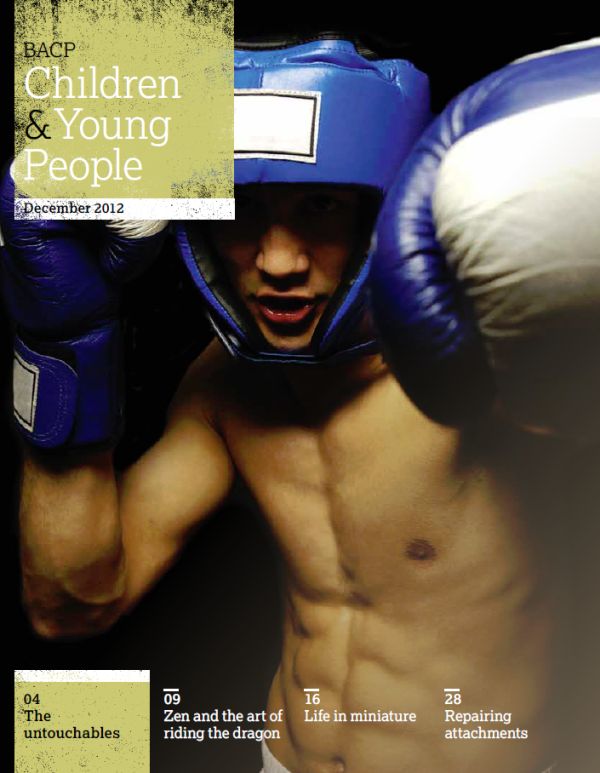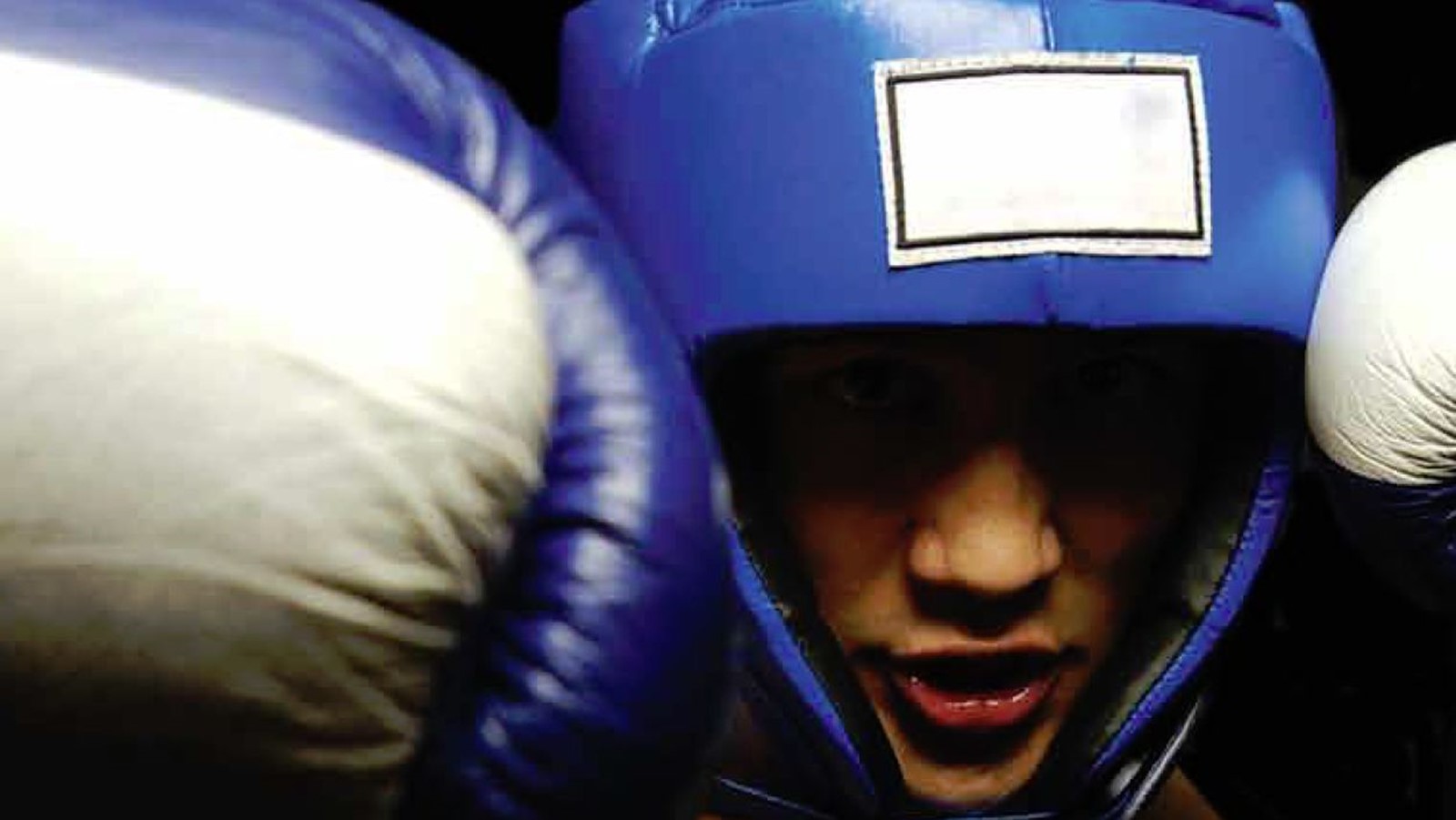In this issue
Features
The untouchables
The omnipotent self is a primitive and drastic manoeuvre of protection. Lucy-Jean Lloyd explains
Selling counselling
How can we present counselling to pre-clients as an acceptable activity? Eleanor Patrick investigates
The first decade
Judith Edwards discusses the early development of ‘Everychild’
In practice
Zen and the art of riding the dragon
Becky Seale uses meditation to stay in the moment. But what about taking action?
Life in miniature
Why introduce hundreds of tiny figures into our therapy rooms? Eileen Wilson explains their value and offers guidance
Repairing attachments
Colby Pearce describes how he works with young victims of family trauma
In the empathy zone
Moving into another’s world without being overwhelmed. Peter Ryan revisits the basics
Issues
School services
Hazel Lamb offers a personal opinion on managing school counselling services
Supervision as creative space
For Gareth Williams, supervision in a pluralistic arena is open to many varieties of interpretation and purpose
Supervision issues
Dilemmas usually happen in the space between a cause for concern and a child protection matter. Lorraine Sherman reports
Regulars
Research
Jo Pybis and Katherine McArthur
Reflecting on… sex
Jeanine Connor
From the chair

Not all articles from this issue are available online. Divisional members and subscribers can download the pdf from the BACP Children, Young People and Families archive.
Welcome from the editor
Birthing something new… blending and hatching… coping with dust on our fingers... surely pastelling describes our work too?
I have been pastel painting recently. Yes, I know – it’s the exact opposite of paying attention to someone else. It’s meant to be. It keeps me solely focused on something other than a client narrative or keyboard, which is as restful, in its way, as suddenly turning a sound-source off. The difference is immediate and startling. When I paint, I’m in the flow. It’s sort of meditative, and the word Zen often comes to mind. So I’m pleased that Becky Seale advocates staying in the minute and learning to ride the dragons of discomfort with ease. It’s a good reminder for us all as we approach the hectic season.
But the real connection between my pastel pictures and our work with young people is that there are so many ways of applying the medium to paper: blending to create a photo-like reality; loose unblended marks that give an impression of the subject; and line-hatching, this way and that, until a picture magically emerges. I think the parallels are obvious without explanation and you can probably place the following articles into these categories without my help: Judith Edwards’ reminder of child development in the first 10 years, where we blend background theory of Everychild into the child in front of us until we get that particular young person’s reality; Eileen Wilson’s advocacy of loose unblended but enlightening strokes, such as are offered to us by clients playing with miniatures in the therapy room; and the every-which-way line-hatching of supervision, tackled by both Gareth Williams and Lorraine Sherman, where we have the freedom (and perhaps privilege and duty) to play with ideas until a way forward becomes clear.
One image I didn’t expect to be given this month resulted from Jeanine Connor’s regular Reflection column. As a result of her latest submission (no pun intended), I had to buy the Fifty Shades trilogy and read it. You need to read Jeanine’s particular thoughts related to this, but I did also notice in the heroine a developing, gutsy, honest, outspoken, ingenious young adult who starts to become proactive. I hope if youngsters are reading this, they will imbibe this attitude too, just like the paper absorbs the pastels when fixative is applied. If so, their erotic reading may well have been worth the purchase price.
It seems to me that the artist (whether writer or painter) has the wonderful task of creating something good and pleasing out of stark reality. Of taking pieces of life and merging them into a new whole. Isn’t this what we are about as therapists? We apply colour to our work in different ways but the outcome we’re aiming at is a refreshed acknowledgement of the subject.
So I hope the material in this issue inspires you in your creative endeavours in the therapy room. It’s dusty, messy work, and eminently worthwhile. And I’m happy to receive feedback on any of the articles for our new Letters page.
For now, though, with the Christmas break approaching, if you’ll excuse me, I have some sunflowers to pastel.
Eleanor Patrick
Editor
